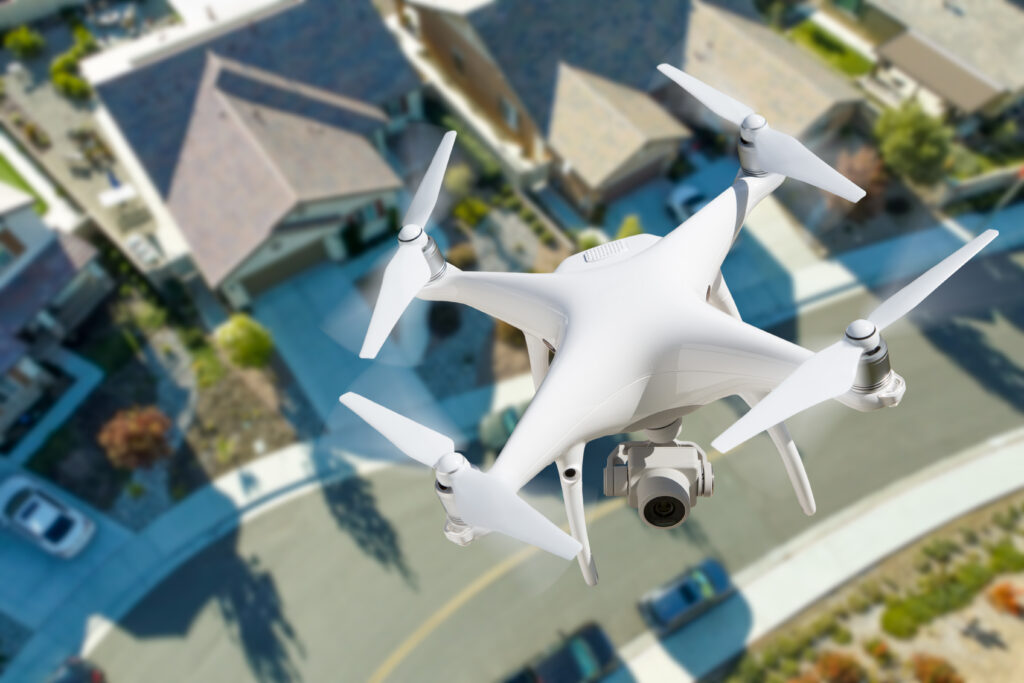In the realm of modern technology, drones have emerged as game-changers, revolutionizing various industries, including home inspections. These aerial marvels harness cutting-edge science to provide unparalleled insights into property conditions. Let’s delve into the science behind how drones work and explore their invaluable benefits in the realm of home inspections.
The Science Behind Drones:
- Flight Dynamics: Drones, also known as Unmanned Aerial Vehicles (UAVs), rely on aerodynamic principles for flight. They are equipped with rotors or propellers that generate lift, allowing them to ascend, descend, and maneuver in the air.
- Navigation Systems: Drones are equipped with advanced navigation systems, including GPS (Global Positioning System), gyroscopes, accelerometers, and barometers. These systems work together to stabilize the drone, maintain altitude, and navigate to specific locations with precision.
- Wireless Communication: Drones communicate wirelessly with ground control stations or remote controllers using radio frequency (RF) technology. This enables operators to control the drone’s flight path, camera settings, and other functions remotely.
- Sensors and Cameras: Drones are often equipped with a variety of sensors, including optical sensors, thermal sensors, LiDAR (Light Detection and Ranging), and multispectral cameras. These sensors capture data about the environment, terrain, structures, and objects below, providing valuable insights for inspections.
- Data Processing and Analysis: The data collected by drones, such as high-resolution images, videos, thermal scans, and 3D maps, is processed and analyzed using specialized software. This data analysis allows for detailed assessments, measurements, and visualizations of properties.
Benefits of Drones in Home Inspections:
- Aerial View: Drones provide a unique aerial perspective, allowing inspectors to assess roofs, chimneys, gutters, and other elevated structures without the need for ladders or scaffolding. This aerial view offers comprehensive insights into property conditions.
- Accessibility: Drones can access areas that are difficult or unsafe for inspectors to reach manually, such as steep roofs, tall buildings, and confined spaces. This enhances safety and efficiency during inspections.
- High-Resolution Imaging: Drones capture high-resolution images and videos, enabling inspectors to zoom in on details, identify defects, and assess the overall condition of roofs, facades, and other structures with precision.
- Thermal Imaging: Thermal cameras mounted on drones can detect temperature variations, moisture intrusion, insulation deficiencies, and HVAC system anomalies. This thermal imaging capability is invaluable for identifying hidden issues and energy inefficiencies.
- Documentation and Reporting: Drones generate detailed visual data that can be used to create comprehensive inspection reports, including annotated images, 3D models, and thermal maps. This documentation aids in communication with clients, contractors, and insurance companies.
- Safety and Risk Mitigation: By reducing the need for manual inspections at heights or hazardous areas, drones enhance safety for inspectors and minimize the risk of accidents or injuries.
In conclusion, drones leverage advanced technology and scientific principles to provide comprehensive, efficient, and safe home inspections. Their aerial capabilities, high-resolution imaging, thermal analysis, and data processing tools make them indispensable tools for inspectors seeking accurate assessments, detailed documentation, and actionable insights into property conditions. As drones continue to evolve and innovate, their role in enhancing the quality and efficiency of home inspections will undoubtedly grow, benefiting homeowners, inspectors, and the real estate industry as a whole.

